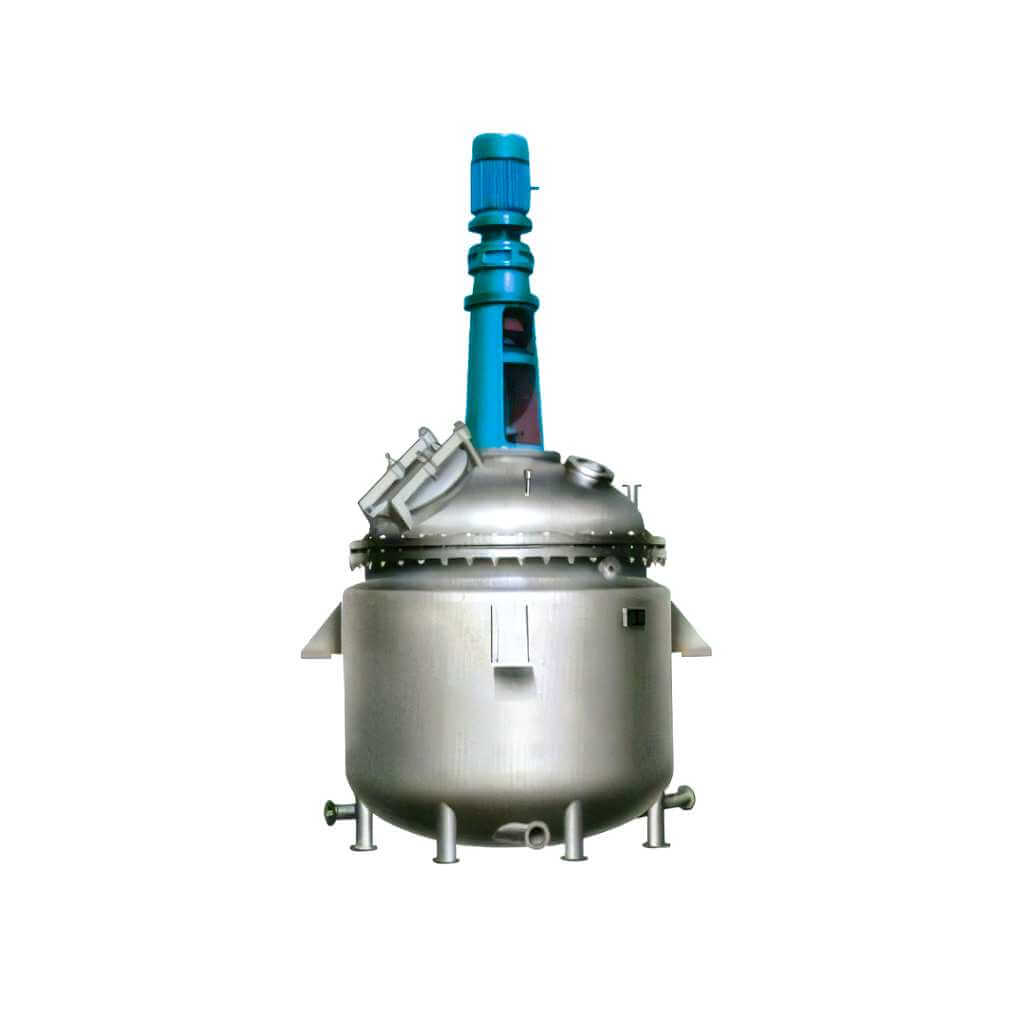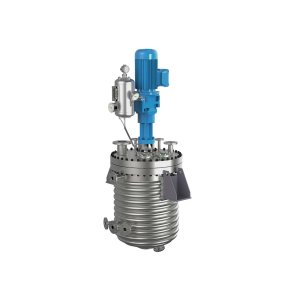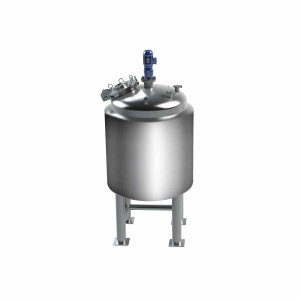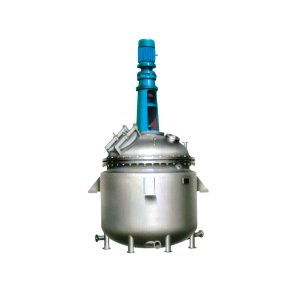The frame blade jacketed reactor is mainly composed of two parts: the kettle body and the kettle cover. The kettle body is made of a high-strength alloy steel plate or composite steel plate. The inner side is generally lined with materials that can withstand medium corrosion. Filled with lead-antimony alloy to conduct heat and stress.
There is an electric heating tube heating device in the interlayer of the frame blade jacketed reactor. A certain amount of heat transfer medium (such as heat transfer oil or water) is injected into the interlayer, and the heat transfer oil is heated by the electric heat pipe, and the temperature of the heat transfer oil is transmitted to the kettle. To achieve the purpose of indirect heat transfer, this is an oil bath type electric heating, equipped with an electric control cabinet, which can realize automatic temperature control and centralized operation. Heat transfer oil can also be used for circulating heating.
Frame blade jacketed reactor assembly composition
1. Kettle structure
The frame blade jacketed reactor kettle body consists of a cylinder body, an upper cover, and a lower head. There are two ways of connecting the upper cover and the cylinder. One is that the upper cover and the cylinder are directly welded together, and the other is that the upper cover and the cylinder are directly welded together. Considering the convenience of disassembly and assembly, the frame blade jacketed reactor can be connected by flange. The upper cover is equipped with manholes, hand holes, and process connections.
2. Stirring device
In the frame blade jacketed reactor, in order to speed up the reaction speed, enhance mixing, enhance mass transfer or heat transfer effect, etc., a stirring device is generally installed. It consists of a stirrer and a stirring shaft, which are connected to the transmission device through a coupling.
3. Sealing method
The frame blade jacketed reactor is suitable for large-scale and continuous chemical production. Due to its fast reaction speed and large reactant flow rate, the frame blade jacketed reactor has a high production capacity. When the flow rate of the frame blade jacketed reactor is low, the flow pattern of the fluid in the tube is close to the ideal fluid. It is suitable for both liquid-phase reactions and gas-phase reactions. It is particularly useful for pressurized reactions. In addition, segmented temperature control can also be achieved.
Operation process of frame blade jacketed reactor
1. Turn on the kettle mixer before adding ingredients. When there is no noise and is normal, put the material into the frame blade jacketed reactor, and the amount of material added should not exceed the process requirements.
2. Before opening the steam valve, open the return valve first, and then open the air inlet valve. The steam valve should be opened slowly, the jacket of the frame blade jacketed reactor should be preheated, and the pressure should gradually increase. The pressure inside the jacket should not exceed the specified value.
3. The steam valve and the cooling valve cannot be started at the same time, and hammering or collision is not allowed when the steam pipe passes through the air.
4. When opening the cooling water valve of the frame blade jacketed reactor, first open the return valve and then the water inlet valve. The cooling water pressure should not be lower than 0.1MPa, nor higher than 0.2MPa.
5. For water ring vacuum pumps, the pump should be turned on first, and then the water supply should be supplied. When stopping the pump, stop the pump first, then stop the water, and remove the water accumulated in the pump.
6. Check the operation of the frame blade jacketed reactor at any time. If any abnormality is found, it should be stopped for maintenance.
7. When cleaning, do not use alkaline water to scrub the frame blade jacketed reactor, and be careful not to damage the frame blade jacketed reactor body.
8. When shoveling the pot, the power of the mixer must be cut off, a warning sign must be hung, and a dedicated person must be assigned to monitor.
9. Regular technical inspections must be carried out according to the requirements of the frame blade jacketed reactor. Those that fail the inspection shall not be used.
-19.jpg)





